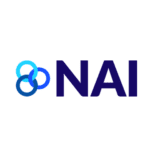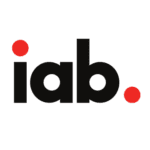Let's ask again: What are KPIs in the media business?
In the ever-evolving realm of media, success hinges on a data-driven approach that leverages the insights offered by Key Performance Indicators (KPIs). These metrics empower media professionals to make informed decisions, optimize strategies, and enhance engagement with their target audiences. Whether you’re a content creator, marketer, or media strategist, the ability to measure and interpret media KPIs will undoubtedly be a vital asset in navigating the complex and fast-paced world of digital media. By embracing these metrics, media practitioners can unlock the secrets to impactful campaigns, resonant content, and a strong and loyal audience base.
Media is no longer confined to traditional outlets; it now spans a wide range of platforms, from social media and streaming services to podcasts and interactive websites. This shift demands a comprehensive and adaptive approach to measuring media impact. KPIs provide the means to analyze performance, optimize strategies, and stay ahead in this rapidly changing landscape.
So, what are KPIs in the media business?
Understanding Key Performance Indicators (KPIs)
Key Performance Indicators are quantifiable metrics that offer insights into the effectiveness of a media campaign, strategy, or content piece. These metrics enable media professionals to assess their efforts, identify areas of improvement, and align their actions with overarching objectives.
Let’s delve into some crucial Media KPIs:
Reach and Impressions
These KPIs measure the number of people who have been exposed to a media piece (reach) and the number of times it has been displayed (impressions). This helps gauge the campaign’s visibility and potential audience engagement.
Click-Through Rate (CTR)
CTR calculates the percentage of people who clicked on a link or call-to-action after viewing a media asset. A high CTR indicates strong engagement and interest in the content.
Engagement Rate
This metric evaluates the extent to which the audience interacts with the media content. It includes actions like likes, comments, shares, and retweets. A higher engagement rate signifies content resonance.
Conversion Rate
Conversion rate tracks the percentage of viewers who complete a desired action, such as signing up for a newsletter or making a purchase. It measures the effectiveness of the media content in driving desired outcomes.
Bounce Rate
Bounce rate indicates the percentage of visitors who navigate away from a website after viewing only one page. A high bounce rate might suggest a need for content improvement or better targeting.
Time Spent
Measuring the average time users spend on a media asset gives insights into content quality and audience engagement. Longer engagement times indicate captivating content.
Social Media Shares
The number of times content is shared across social media platforms reflects its virality and impact. Shares amplify reach and contribute to brand visibility.
Return on Investment (ROI)
ROI calculates the profitability of media campaigns by comparing the cost of the campaign to the revenue generated as a result. It provides a clear picture of the campaign’s financial success.
Brand Mentions
Monitoring how often your brand is mentioned in media, social posts, or articles can help gauge brand awareness and sentiment.
Subscriber Growth
For media platforms like podcasts or newsletters, tracking subscriber growth indicates the effectiveness of content in retaining and attracting audiences.




